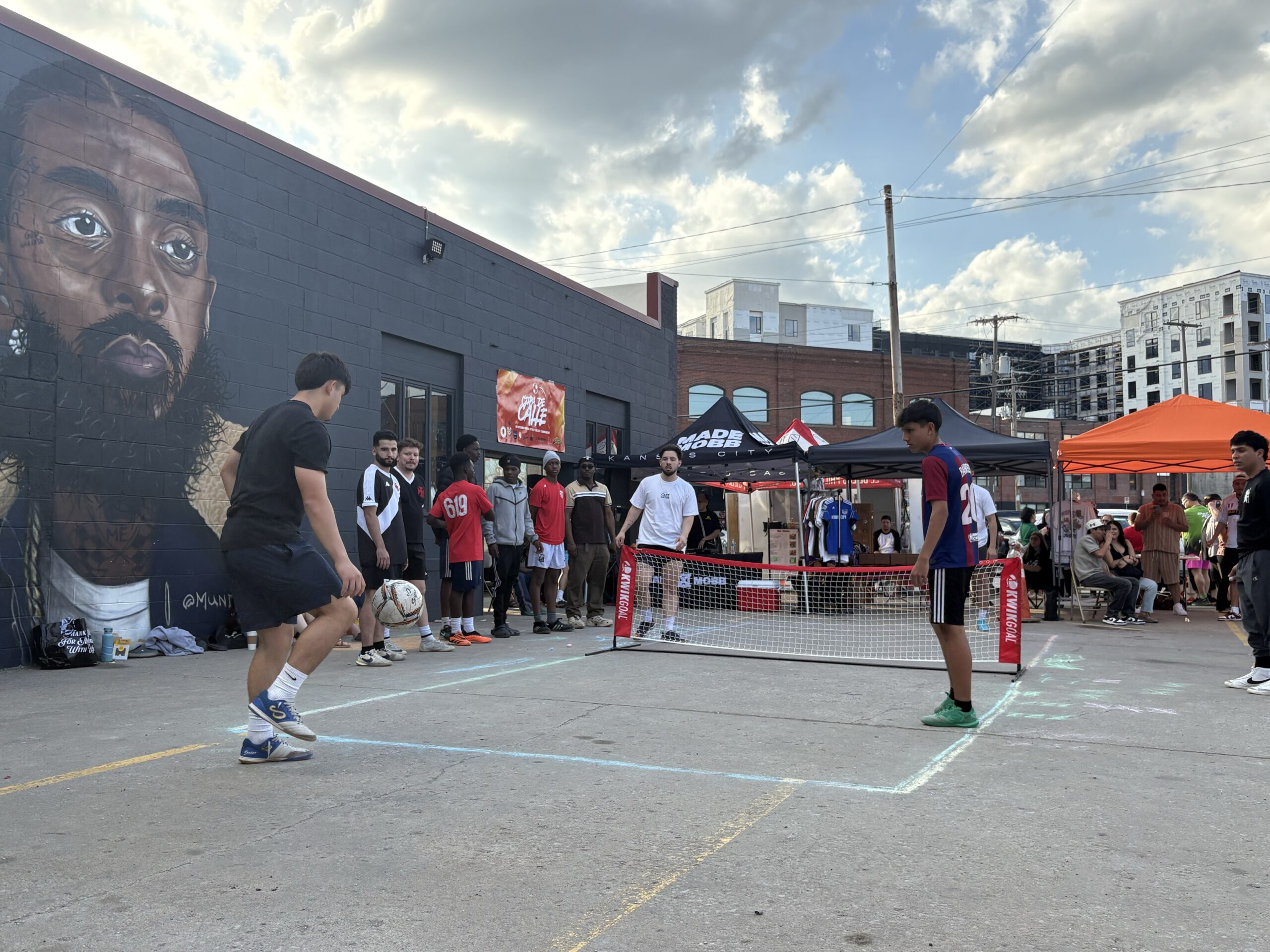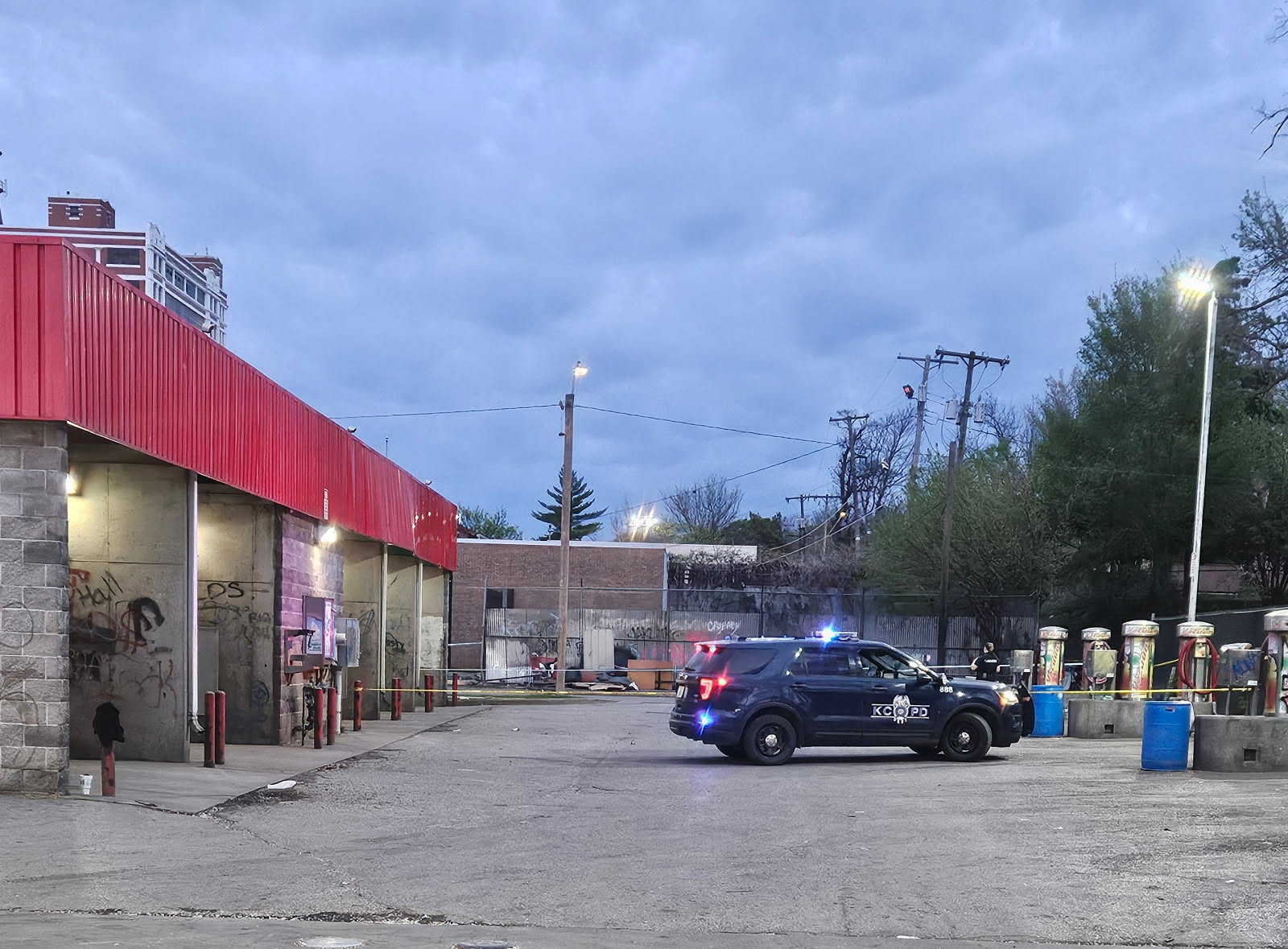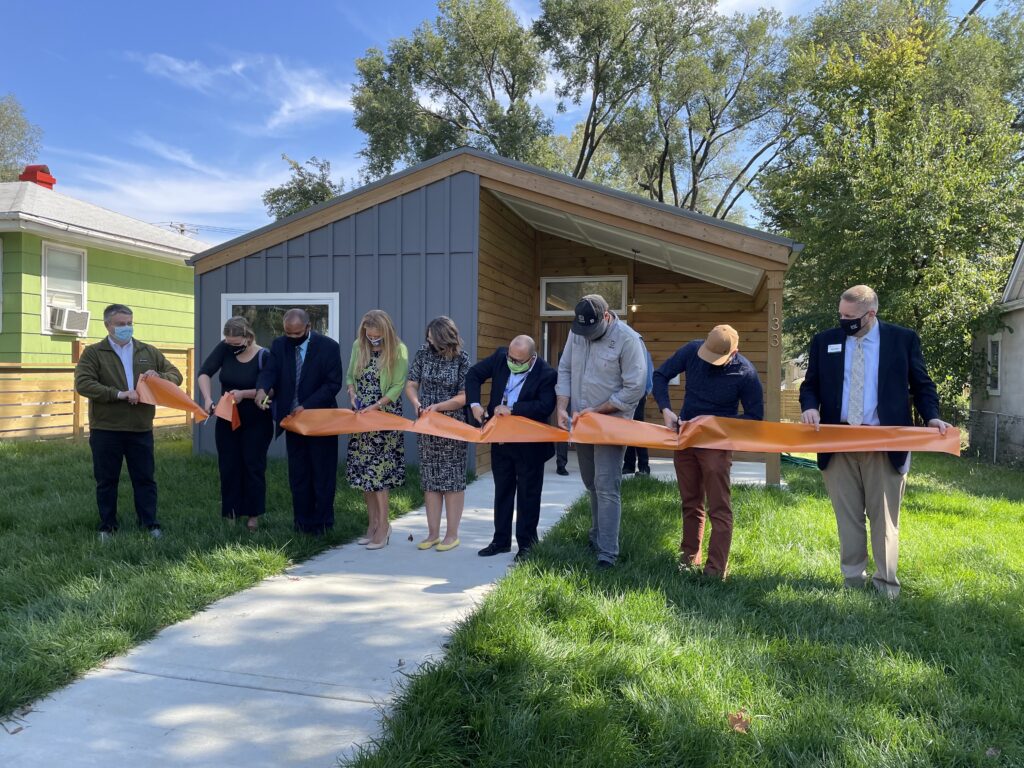
The Mattie Rhodes Center’s Northeast Alliance Together and community partners celebrated the completion of the agency’s first venture into single family housing on October 12.
The house, a net zero single family affordable home, is on the 100 block of North Topping in the Indian Mound Neighborhood.
Partners broke ground on the project last August, just down the street from Mattie Rhodes’ Northeast location, in a diverse, tight-knit neighborhood threatened by a shortage of quality, safe and affordable housing.
The design was developed in collaboration with Kansas State University (K-State) and CoBuild, led by Tate Williams, a Pendleton Heights resident and local contractor focused on affordable housing.
K-State’s School of Architecture created a thoughtfully designed, healthy, energy efficient and affordable home that will help a household thrive while also investing in the neighborhood and strengthening the community in the long term.
Former NEAT Director Mary Cyr worked with the community on communicating the planning for the project at its inception, sharing initial designs from students of K-State Architecture Professor Michael Gibson.
“His students helped make this possible, and him overlooking his students really helped make this possible, and is working on the next round of houses that we hope to do just a couple of blocks away here,” said NEAT Director Scott Wagner.
Mattie Rhodes Center CEO John Fierro said CoBuild, along with Emerging Builders, made great partners.
“I’m just happy that Mattie Rhodes Center can continue to respond to the community needs and certainly affordable, safe housing is very important for anyone, and so I’m really looking forward to us continuing to evolve and building a community here,” Mattie Rhodes Center CEO John Fierro said. “Tate, obviously, with CoBuild, is a great partner and Emerging Builders is another great story of having individuals from the urban core receive high paying jobs, but also the supportive services to make sure that all of their family’s needs are met, as well.”
Affordable housing is the highest priority for the Indian Mound Neighborhood Association (IMNA).
“We’ve kind of seen, in Pendleton Heights and a little bit of Scarritt, kind of that gentrification creep, or unaffordability creep, and unfortunately, there’s very few brakes on that train, like it’s moving and it’s hard to kind of brace yourself as we watch it encroach from the west,” IMNA – Brynn Musser said. “We would do anything to make sure that our neighbors that have lived here forever get to stay here forever, and that they don’t get priced out… Our neighbors are the most important part.”
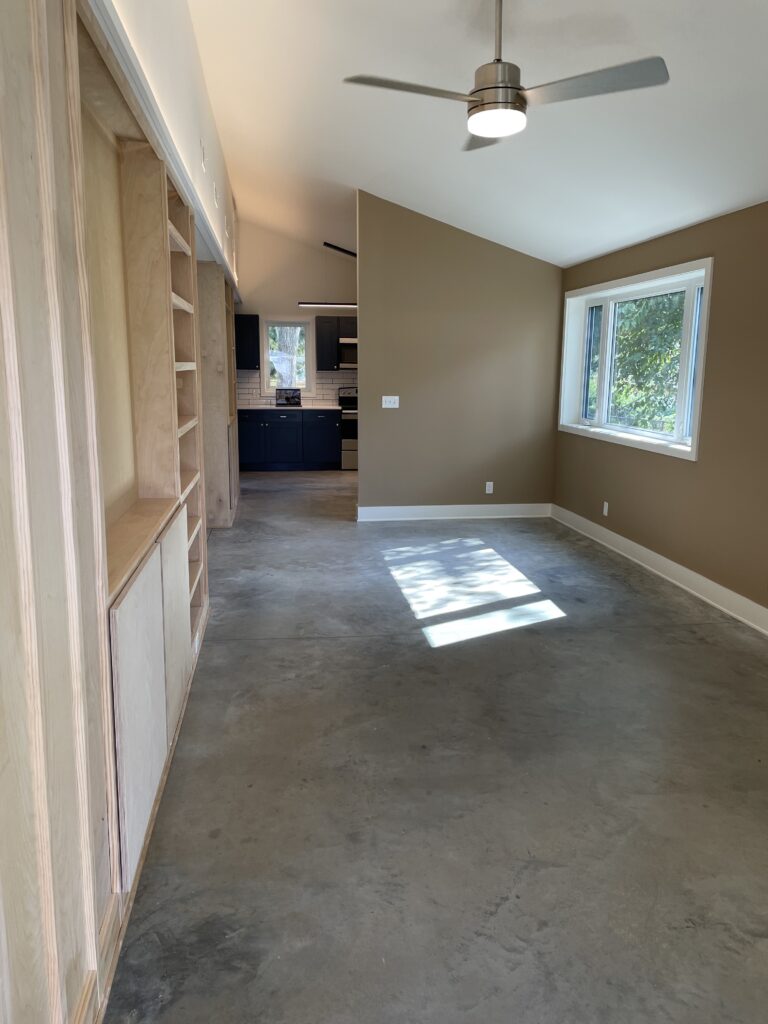
She’s optimistic about the idea of doing this on a larger scale because it would take the cost down.
“I would love to see a larger scale simply to bring cost down and to just keep driving the affordability lower and lower in this neighborhood,” Musser said. “I would love to see multi-housing units or singles. When you think about complete neighborhoods, it’s a mixture of renters and homeowners. It’s a mixture of commercial buildings – I want to be able to walk to a little corner shop. If everything is within walking distance and our neighborhood stays a diverse mix of everyone, that’s ideal.”
Williams recognizes that many in Northeast are experiencing homelessness or housing instability, and that single-family homeownership is not necessarily the only solution. Working with Mattie Rhodes, he’s doing what he knows best to address those problems long-term.
“That Topping house and the future builds that we’re going to do with Mattie Rhodes are not the end all, be all of affordable housing,” Williams said. “It’s like this huge continuum, and this is probably even like a later stage resource or a later stage option than like a really early intervention.”
He sees a need for multi-family housing with case management, trauma-informed property management practices, and a whole toolkit of resources to get people back on their feet, but that’s not what he’s focused on.
“For me, the thing I’m really interested in is that step to building equity, building wealth, that comes with homeownership for someone who has traditionally been sort of cut out of the affordable housing or the housing conversation altogether,” Williams said.
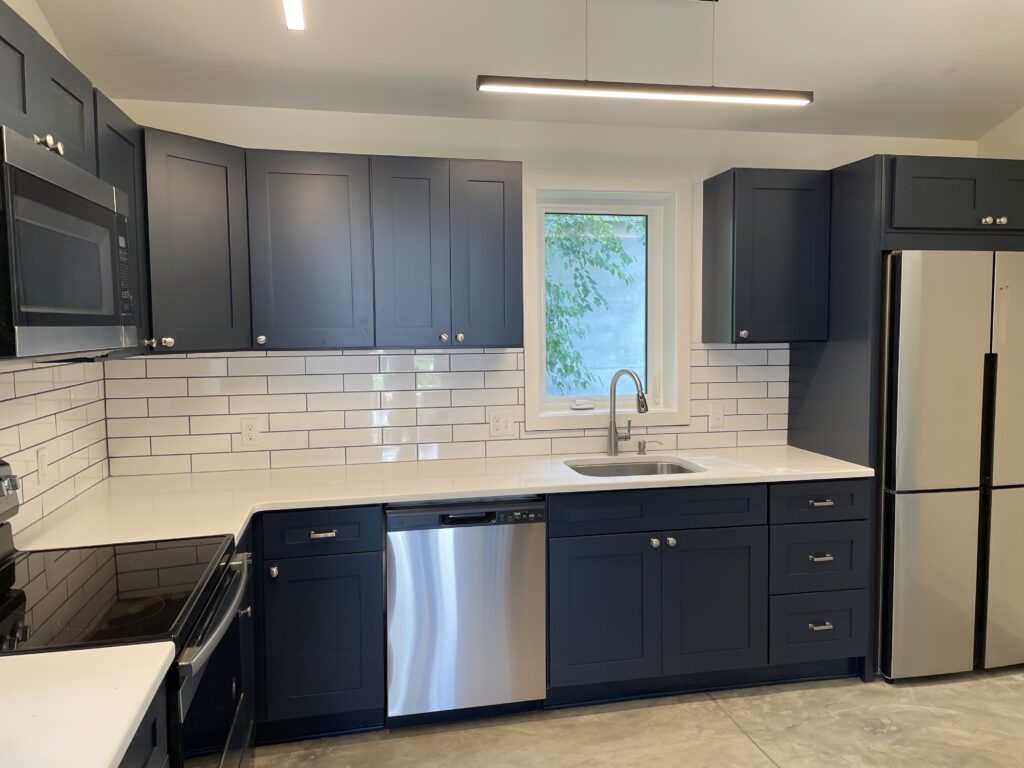
Building on a vacant lot in such a dense neighborhood comes with a lot of complications. Often, a house once stood on that property. When it was torn down, the foundation and debris were buried. On this particular lot, CoBuild wasn’t able to dig a basement, so they got creative, bringing in topsoil and pouring a slab.
“It’s just essentially a flat piece of concrete on top of the ground, it still has to have footing walls around it, and traditionally, code requires that those footing walls go three feet deep into the soil because of frost,” Williams said. “Well, this design allowed for a much shallower depth of two feet with what’s called a wing wall, so there’s a frost barrier that comes out from the foundation at an angle, and it’s just a piece of foam. It essentially forces the frost to – instead of just climbing straight down the side of the footing – it has to kind of curve around this frost wall. By the time it makes that curve, it’s already below that three-foot depth.”
Williams is excited about the prospect of scaling up the project with Mattie Rhodes, which would allow him and his crew to continue innovating when it comes to solving issues creatively – and on a budget.
“It solved the problem of having to dig up the old foundation, which is an added cost,” Williams said. “It’s also a little bit less material. It does take a little bit more willingness for the contractors to adjust how they typically build things, but that’s the same with any innovation.”
The next time around, Williams is hoping for a smoother process. With pandemic pricing on materials, social distancing and added safety measures on the job site, and potential buyers falling through, there were a lot of setbacks.
“You’ve got to be dedicated to it, and so that means that I have to build my business around this, as opposed to building it around higher profit margin projects,” Williams said. “The problem with that is you have to develop a market. So essentially, I’m now in the process of working with partners like Mattie Rhodes and others to actually build up their capacity to do more, so that they will then hire me, so that I can be focused on affordable housing, innovation and construction.”
For the next project, although there will still be a learning curve, they’re working to get a better processes, and more efficient manufacturing of the panels that created the walls of the house. They are testing lower cost, higher efficiency materials that will also help the buyer save on their utility bills.
“Gentrification, and the fact that new development in historically disenfranchised neighborhoods results in this whole ecosystem change, I wish I had a solution for that,” Williams said. “In my understanding, there hasn’t been a privately developed home in Indian Mound for decades. There have been new homes built, but they’ve been built by nonprofits. So Mattie Rhodes would be in that category where they’re a nonprofit developer who’s building a new home.”
That isn’t because there isn’t a need for new homes or that there aren’t properties that could be built on, it’s because developers can’t make money doing it, Williams said. Two ways the cost of living could increase for neighbors of the new build are county taxes, and a landlord raising rent.
“When new homes are built, owners see their property values increasing, and if they have a tenant in their home, they increase the rent, typically,” Williams said. “The county tends to, when they do their assessment, they then see increased property values in parts of the neighborhood. So then they raise taxes for everybody, those big ecosystem issues – and there’s lots of others – I’m not trying to say that’s the only two pieces of the kind of gentrification puzzle, but the the chance of kind of somehow impacting the neighbors cost of living is directly tied to those two entities.”
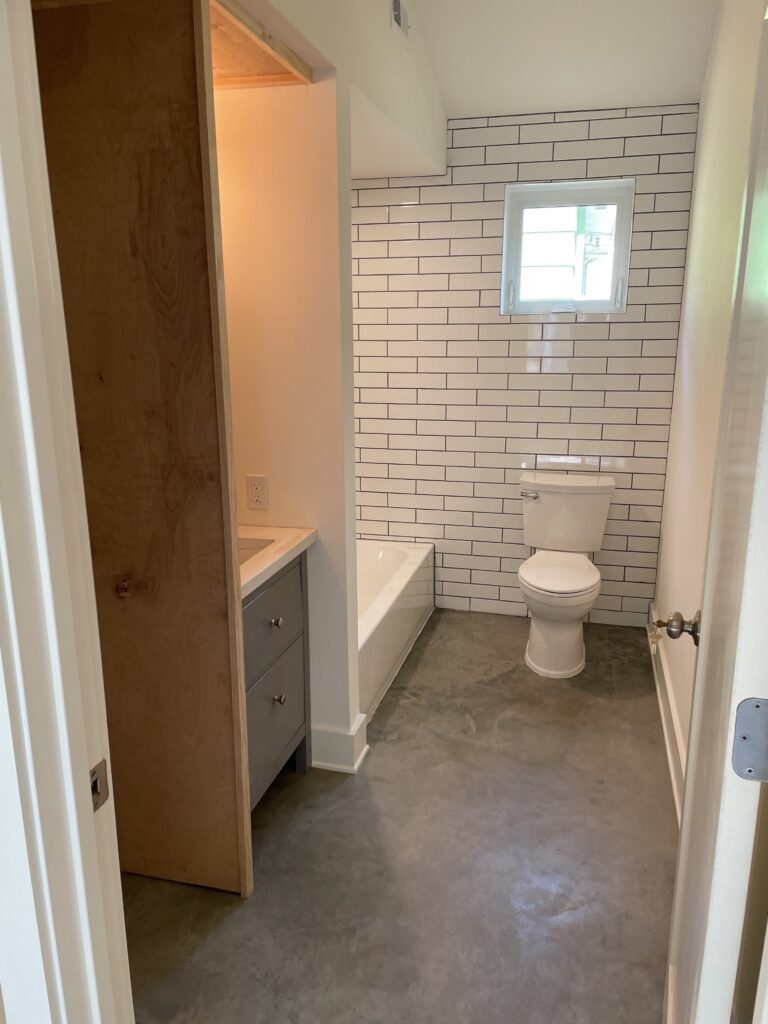
The home was listed for $125,000, and with a 30-year mortgage, the new homeowner would pay about $600 per month, less than market rate rent of a comparable size unit in the neighborhood – if one can find any, Williams said.
“For less than rent, someone can own and be building equity in a home,” Williams said. “ Now, that’s a 30 year note – a lot of people might not believe that’s how a home should be sold – but that’s the most common tool for homeownership.
The estimated utility costs for that owner are around $1,000 a year, and the house only uses one utility – electricity.
“Some of that is dependent of Evergy’s pricing, but the energy usage of the home is miniscule for a fully operational home with all the amenities,” Williams said. “The power of that is, if and when the owner is able to apply for a grant for solar panels or something like that, they could offset that $100 a month and in fact, actually begin generating a return because they would over-produce energy back into the grid and Evergy would start paying them.”
There’s potential for these homes to be not only net zero, but potentially even profit reducing for the homeowner at a time when the City is focusing on affordable energy efficiency, Williams said.
Realtor Angela Martellaro worked with NEAT to find a qualified buyer for the home, and knows the neighborhood well.
“I’ve worked in the Northeast for years, actually one of my largest bases of clients is recently arrived refugees, mostly from Burma, but also from Nepal and Congo,” Martellaro said. “The Northeast is where a lot of those folks want to live, and that’s the area they’re familiar with. I know the Northeast really well, I love it over here, but I also know from working with first-time, first generation homebuyers that there’s a real lack of quality affordable housing.”
She said although home prices in the Northeast are still fairly low, that doesn’t mean there are move-in ready houses that young families want to move into. However, working with Mattie Rhodes on this project, she gets to be part of creating a home that is affordable, safe, healthy, high-quality, and ready for its new family.
“Obviously lead paint is a concern in older homes, that’s something I try to talk to my clients about a lot,” Martellaro said. “Older windows can create homes that are really drafty, poorly insulated, so with new construction, you just have all the modern benefits. You don’t have to worry.”
Some homes in the neighborhood don’t even have central air conditioning.
“If you think about climate change and our futures, that can actually be like a huge health hazard on some of these really hot days,” Martellaro said.
Mattie Rhodes saw a need to get ahead of some of the problems their clients were facing. She hopes the project will soon be on a larger scale.
“If you don’t have stable affordable housing and healthy housing, then you’re going to have a host of other problems, not only health issues, high utility bills, difficulty paying your bills, kids having to move around a lot and change schools a lot as a result of eviction or just not being able to find good quality housing,” Martellaro said. “I see this as a step in the right direction as far as providing a solution to some of those problems rather than a bandaid.”
Martellaro knows something is not always better than nothing when it comes to addressing vacant lots in Northeast’s neighborhoods.
“But when there is a need for housing and we’re meeting that need, I think that’s part of the whole ecosystem of a neighborhood,” Martellaro said. “There’s a lot of things you can put on a vacant lot, but I think housing that is affordable to the people who already live in this area, who want to own or who are having a hard time securing adequate housing, I think that’s what matters.”
Now, Director of NEAT Scott Wagner is looking toward the future.
“Where we are looking at currently is a series of lots that are on the 300 block of North White,” Wagner said. “There are several of them that are vacant that we think provide an opportunity for us to not only create more availability of homes like these, but can really restore the rest of that block, really finish that block.”
Right now they’re in a phase of getting new master plans together with the help of K-State.
“That will allow us to hopefully then get permits for those master plans done, which then means that when we’re ready to build, we can say this plan on this lot,” Wagner said. “And then we already have that level of permits complete and we can start building much more quickly.”
Between now and the end of the year, they’re working to get those plans done, then go through that permitting process. Potentially by the second quarter of next year, they can begin building.
“We have been awarded enough Home Funds through the City, that allow us to move forward on two builds,” Wagner said. “Our goal is to try to do three or four at once. So, in that time we’ll also be looking for other financing options to hopefully add those additional builds.”
The vacant lots on North White had been home bank properties, but about a year ago NEAT requested they be moved over to the Homesteading Authority with the idea that NEAT would eventually be going to that body to acquire them.
“They are not in our possession, per se, but I think the City understands that is our plan in moving forward,” Wagner said.


